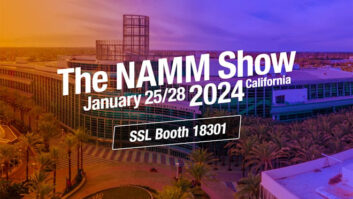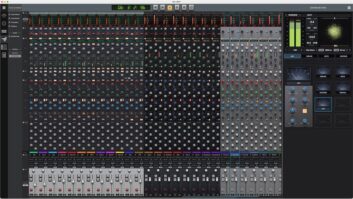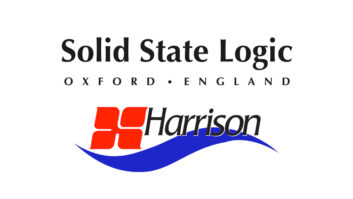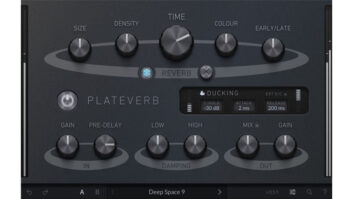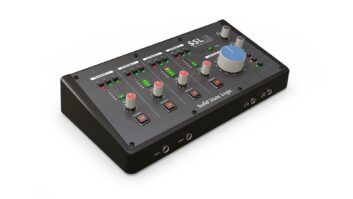Price notwithstanding, the idea of replacing hard drives with solid-state drives (SSDs) seems like a nobrainer. But like so many aspects of high-tech, what on the surface seems simply like substituting one form of technology for another has many additional implications for pro audio.

It’s great that SSDs—which have no moving parts—make no noise. But another source of noise is fans. While required to keep CPU and RAM temperatures under control, fans are also needed for power supplies and, yes, hard drives (if you have a removable hard-drive drive bay, you’ll see a small fan in premium models). SSDs generate far less heat than hard drives, reducing the need for fans.
SSDs can also draw less current than hard drives, which allows relaxing the power supply requirements (again, that’s less heat and less need for fans). However, there’s a caveat: One of the myths about SSDs is that if you put one in a laptop, you’ll automatically have much longer battery life. But that’s not always the case, depending on several variables. Traditional hard drives alternate between idle states and states where head positioning requires that motors come into play, so the current consumption jumps. SSDs don’t have the current spikes, but are always on. (This isn’t much of an issue with desktops, where a low, constant power drain is preferable to having multiple spiking drives putting “dirt” on the power supply lines.)
But remember that SSDs use a relatively new technology, and haven’t been optimized for powersaving possibilities. Consider how computer operating systems have tweaked power management over the years, and there’s no doubt that SSDs will benefit from similar scrutiny.
Although using SSDs doesn’t eliminate the need for fans entirely, the fans that remain can be quieter, rotate more slowly, and be subject to meaningful fan control, so they kick in only as needed. The implication here is you don’t need a machine room located a significant distance from where you record or mix—which means that lines and cabling can be shorter, resulting in less expense and lower potential noise. Furthermore, with less heat, thermal design becomes less significant; computers won’t have to add space for airflow if there aren’t fans creating that airflow. SSDs are lighter than 3.5-inch hard drives, too.
What about lifespan? Detractors are correct when they say SSDs have a limited lifespan because they can perform only so many read/ write cycles during the device’s useful life. However, there are two competing SSD technologies with different characteristics. Single- Level Cells (SLC) read and write to one cell, whereas the less expensive Multi-Level Cells (MLC) store two bits (or more) in a single cell, which wears them out faster. However, the reality for pro audio is that we’re not storing crucial military data, and besides, MLC SSDs will almost certainly outlast the gear working with it (and in any event, outlast typical hard drives). What’s more, manufacturers are constantly developing new ways to extend life via the SSD device controller itself (like distributing write cycles over a chip to even out wear over the chip, and including redundant memory that can take over for failed cells).
Another advantage for pro audio and video is speed. Not only are SSDs faster to read and write data (especially read), but they also don’t need time to spin up or find a specific area of a disk. Nor do they require de-fragmenting. If you need to “render to disk,” you’ll definitely notice the advantages of SSDs, and if you use a computer in a live situation, the relative insensitivity to mechanical shock, and immunity to magnetic fields, are appealing indeed.
At present, there are few SSD limitations. The biggest is a 10- 20 times higher cost per GB compared to traditional hard drives (even taking savings from more efficient operation into account). You don’t see 2TB SSDs because, though technically possible, few would want to pay the sticker price. The second is that MLC drives have a hard time with encryption, because you can’t overwrite data, only write to blank or previously erased cells. So, the non-encrypted version of the file remains on the SSD until you erase it, and with techniques like wear-leveling, the SSD can even “forget” where it wrote data. It’s not a big deal, but if you need data security—like you’re working on Steven Spielberg’s next blockbuster—you need to be able to implement “secure erase” functionality.
For the foreseeable future, it seems the smartest approach is to use SSD for situations where speed and low noise are paramount, and spin up hard drives for backup. Sure, SSDs are coming down in price, but so are hard drives, and it will likely be some time before the two technologies achieve price parity. SSDs are way cool, but hard drives aren’t going away anytime soon.
Craig Anderton is executive editor of Electronic Musician magazine and editor in chief of harmonycentral.com.


